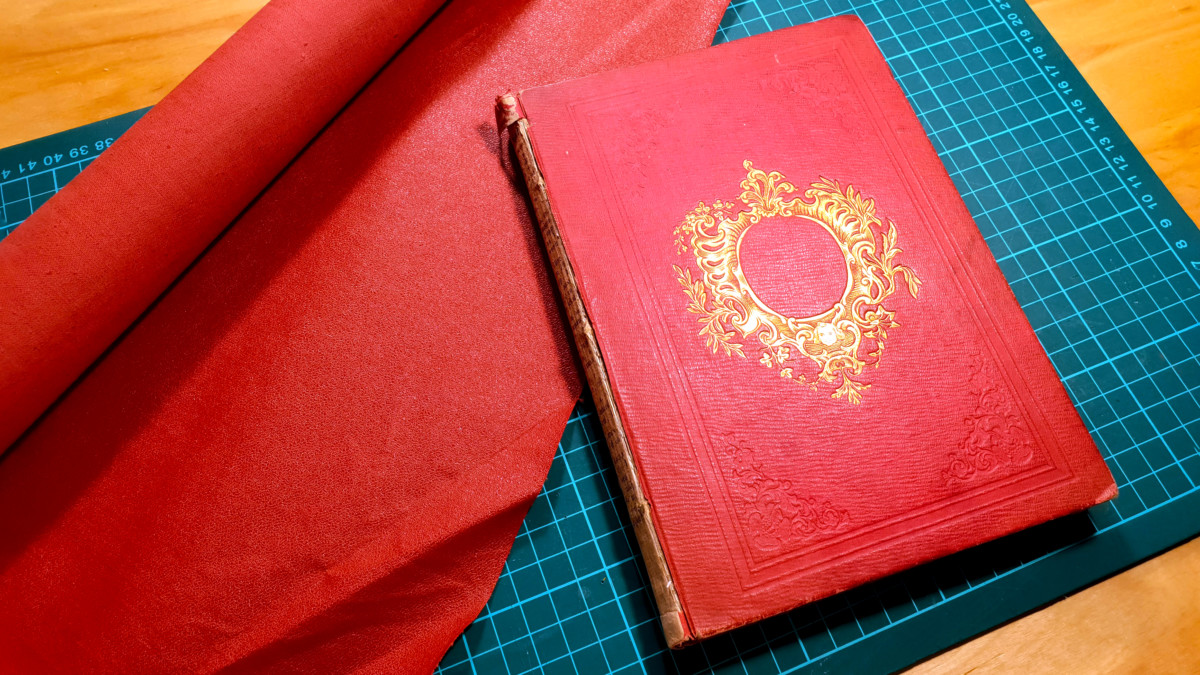A 19th-Century Diary for My Daughter
While walking along the stalls at the book market in the Hague, I often find old diaries. I never thought I would have any use for any of them before I found this red hardcover journal.
I understand, that for historians, sociologists, collectors, or people in charge of props, these witnesses of different epochs may happen to be treasure troves of information. For me, however, a fully used diary is not a practical thing.
This red gilded diary was one of many slightly damaged books at the 1 Euro section. Right from the moment I saw it, I thought it may be a nice simple repair project and a gift for my daughter.
The previous owner started writing in this journal more than 150 years ago but made only 4 or 5 records. Some quotes and thoughts on divine matters. Almost all the other pages are blank.
Initially, I thought to use some leather to repair the spine. But soon enough I remembered I had a roll of vintage Soviet calico left. It matched the color almost perfectly.
It was a fast project that didn’t demand any archival measures. The book should be strong enough and is supposed to be used by a teenager. So I didn’t think it needed to pass through any special procedures like using acid-free agents and materials.
I used PVA, thick 160 g/m2 paper to reinforce the calico spine, and the calico itself. In the end, I decided to use some of the gorgeous marbled paper I bought from Katy Savelyeva past April at the Bookbinders’ Fair in Sint-Niklaas, Belgium.
Here is a little trick I was taught at the American Academy of Bookbinding. When lining up the cover material of a case bound book, you’d like the reinforcement stripe to be perfectly placed on the cloth or leather. To do that without any fuss, find the middle of the cover material and the middle of the piece of paper/cardboard. Mark them with a pencil (not a marker or pen, because the ink may go through the material). Now after you apply glue or paste you only need to match the lines. Just don’t forget to glue the side that doesn’t have marks. Or make marks on both sides of that piece of paper.
Here is the final result:
I used the marbled paper to reinforce the broken hinges of the endleaves. I’m still not sure if I like my decision not to make proper folded pieces. However, I wanted to emphasize the initial owner’s marks at the beginning of the book and that goal seems to be fulfilled.
Please Support us on Patreon!

Moreover, starting with the pledge level of $3, you will get a digitized vintage book about bookbinding, book history, or book arts each month from us!
These pledges help iBookBinding to continue its work and bring more information about bookbinding and book arts to you!












